Sunday, April 25, 2010
Friday, April 23, 2010
Eat Cheap AND healthy
1. Double or triple your normal recipes and freeze the leftovers. You’ll dramatically cut down the cost of buying prepared and packaged foods. And, you’ll eat healthier when you’re tired or in a pinch for time.
2. Use seasonal fruits and vegetables as much as possible. When food is in season, it’s cheaper. Plus, you’ll be doing your part for the environment by eating more locally grown food.
3. Watch for sales. Plan your meals around some of the cheaper items you find.
4. Add more beans to your diet. Beans are not only the “magical fruit,” they can also work magic on your budget since they’re super nutritious and cheap. Dried beans can be cooked effortlessly overnight in a slow cooker. Place one cup dried beans and six cups water in a slow cooker before going to bed and cook on low overnight. Drain and rinse in the morning and they’re ready for use in your soup, stew, chili, salad, or other recipes.
5. Eat more vegetarian meals. Meat tends to be more expensive; not to mention, it also takes a higher toll on the environment and your body.
6. Take a page from the chef’s notebook. Use mirepoix as a base for many soups, stews, and rice dishes. Mirepoix is a fancy-sounding French word that simply means chopped onions, celery, and carrots. These are among the cheapest vegetables and they add lots of flavor to your meals.
7. Shop at your local farmers’ markets instead of grocery stores as much as possible. Most farmers’ market food doesn’t have the built-in costs of lengthy transportation, distributors, warehousing, etc. Plus, the food is fresher and frequently more nutritious, and eating locally is better for the environment.
8. Grow your own sprouts and herbs. Growing your own sprouts is much easier than you think. Not sure how? Read my article on how to do it.
9. Buy seasonal produce in bulk and freeze it. From berries to sliced peaches to chopped green and red peppers, many fruits and vegetables can be frozen.
10. Hit the bulk bins at your local health food or grocery store. Here’s where you’ll find the lower cost whole grains, beans, seeds, nuts, and flour. They’re usually substantially cheaper than their packaged counterparts are. And, less packaging is good for your wallet and the planet.
11. Shop the perimeter of your grocery store. You’ll find fresher, healthier options there. The center aisles are primarily reserved for the packaged, convenience foods that tend to cost more and are full of dangerous additives, trans fats, and sugar.
12. Make your own snacks. Prepared snack foods are not only full of junk ingredients that you should avoid, they tend to be expensive. Make a batch of cookies, muffins, or other snack food with wholesome, natural ingredients.
13. Plan ahead. A few minutes of planning your grocery list and the meals you’ll make can save you plenty of cash on impulse purchases you’ll be less likely to make.
Posted by Lesley Marcacci at 9:15 PM 0 comments
Saturday, May 30, 2009
WHY ORGANIC?!?!
 It’s common sense – well-balanced soils grow strong healthy plants, which taste great!
It’s common sense – well-balanced soils grow strong healthy plants, which taste great!
- Organic certification is the public’s assurance that products have been grown and handled according to strict procedures without persistent toxic chemical inputs.
- Many EPA-approved pesticides were registered long before extensive research linked these chemicals to cancer and other diseases. Now the EPA considers 60% of all herbicides, 90% of all fungicides and 30% of all insecticides as potentially cancer causing.
- The elimination of polluting chemicals and nitrogen leaching, done in combination with soil building, protects and conserves water resources.
- Soil is the primary focus of organic farming. We’re facing the worst topsoil and erosion in history due to chemical intensive, mono-crop farming.
- Organic agriculture respects the balance demanded of a healthy ecosystem: wildlife is encouraged by including forage crops in rotation and by retaining fence rows, wetlands and other natural areas.
- Organic farmers have led the way, largely at their own expense, with innovative on-farm research aimed at minimizing agriculture’s impact on the environment.
- The loss of a large variety of species (biodiversity) is one of our most pressing environmental concerns. Organic farmers and gardeners have been collecting and preserving seeds and growing unusual varieties for decades.
- Now every food category has an organic alternative. And non-food agricultural products are being grown organically – even cotton, which most experts felt couldn’t be.
Posted by Lesley Marcacci at 7:27 PM 0 comments
Tuesday, December 16, 2008
Keep our Beaches Clean!
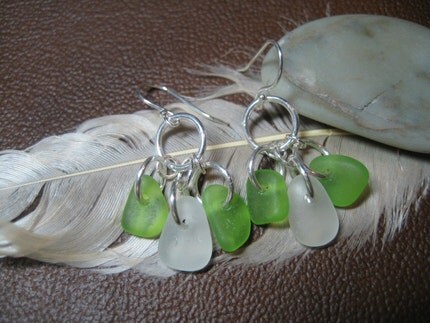
Many people are unaware how their daily activities, from driving a car, to not properly disposing of their garbage, or even throwing a cigarette butt on the ground, can impact the plants and animals off our shores. This debris can harm or kill beach organisms. Pollution also makes using the beach less enjoyable for humans
- Almost 90 percent of floating marine debris is plastic. Many kinds of plastics can be recycled to make furniture, bottles, and insulation.
- Glass can be recycled to make new glass, insulation, and asphalt. In 1993, we recycled more than 600 tons of glass, sustaining 4,320 jobs
- Nearly 75% of all metal is used just once. Recycling steel reduces air and water pollution and requires 70% less energy than producing it from raw materials
- Waste paper can be turned into raw material for new paper and paper products. Every 2,000 pounds of paper recycled saves 17 trees.
Pick up trash, glass, or any other trash you see where it doesnt belong!!
SimpleLifeDesigns uses beach glass to make beautiful creations. Other peoples trash becomes another treasure!! Check out the beautiful necklaces, earrings, rings, and other great finds HERE.
Posted by Lesley Marcacci at 3:20 PM 3 comments
Upcycle!
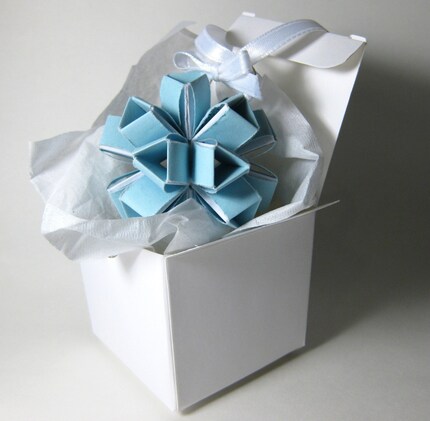

Upcycling is a component of sustainability in which waste materials are used to provide new products. It is generally a reinvestment in the environment. Upcycling is the practice of taking something that is disposable and transforming it into something of greater use and value. This process allows for the reduction of waste and use of virgin materials.
Upcycling can be done with clothing, paper, and any materials that may go to waste. Its great to transform an old shirt into a purse, or a skirt or an old national geographic into envelopes or orgami.
lillipopsdesigns on etsy.com uses old adult clothes to transform them into beautiful stylish outfit for kids. She designs all of the clothes herself and they are all sewn for durability so kids can play hard in them!
PaperAffection uses paper to make upcycled ornaments for the holidays. These are georgeous for the holidays and come wrapped in a gift box. Perfect for your eco-friendly relatives!
Posted by Lesley Marcacci at 2:38 PM 0 comments
Sweet Dreams Baby
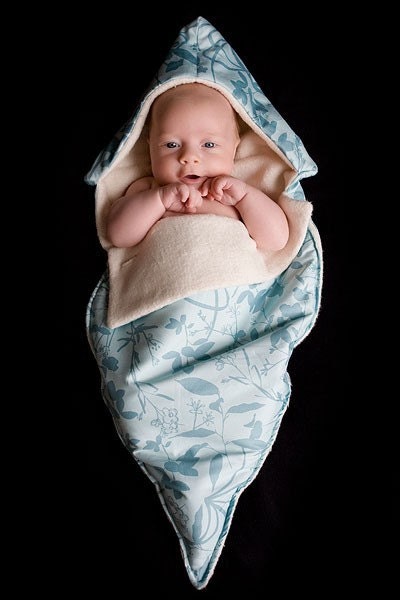
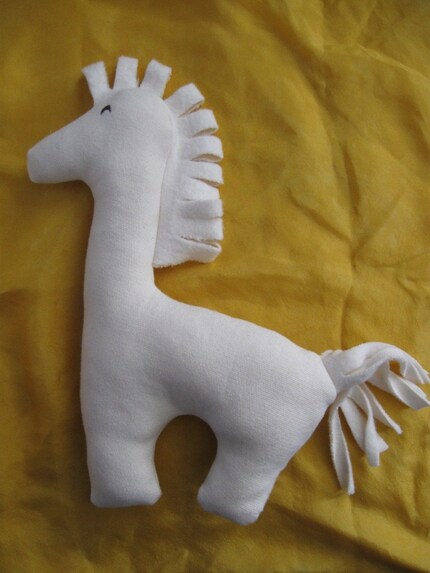
This sweet giraffe is made out of 100% pure organic cotton fleece with an organic filling. Perfect for those sweet cuddly moments with baby. It doesnt feature any buttons or tiny pieces that baby can choke on, so its perfect for any age. The soft mane and tail are great for childrens exploration! It can be purchased on Etsy.com
Another great find is the Noonie. This baby wrap is the perfect cozy environment to swaddle your baby. It is made out of organic fabric and perfect for those cold winter days! Check it out HERE
Posted by Lesley Marcacci at 2:19 PM 0 comments
New and Improved



The re-usable produce bags are new and improved. Of course I still have the window and the classic re-usable sandwich and snack bags, but I am now carrying WATERPROOF snack and sandwich bags. These are great for the ewwy gooies such as sliced apples, carrots, lettuce... anything that may be a little damp. It was also keep other food fresher, longer. They are lined with a waterproof oil cloth (similar to the lunch box material) and are very easy to clean. They can also be used as a wet bag for feminine liners or wet wipes as well as kids toys, passifiers, or anything you would normally stick in a plastic baggie. Check them out at www.lmarcacci.etsy.com!
Posted by Lesley Marcacci at 1:33 PM 0 comments
Wednesday, November 19, 2008
Why Re-usable bags?



The list goes on and on... there are so many reasons to use re-usable bags. And dont just stop with re-usable shopping bags, use re-usable snack bags, produce bags and bulk bags too! We can eliminate plastic and cloth helps save money in the long run! Did you know that...
- In the US, about 12 million barrels of oil and 14 million trees go to producing plastic and paper bags each year.
- Reusing makes cents. Stores like Albertsons and Wild Oats offer a 5-penny discount if you bring your own.
- Be a role model. Other shoppers'll watch and learn.
- Make sure plastic bags don't harm sea creatures. They're one of the 12 most commonly found items in coastal cleanups.
Posted by Lesley Marcacci at 4:29 PM 0 comments
Tuesday, November 11, 2008
Womens Personal Care
Check out these numbers from www.planetgreen.discovery.com. Pretty interesting to keep in mind when you are shopping for personal care items!
- $35 billion: The size of the booming cosmetics industry. Major loopholes in US federal law allow this industry to put virtually unlimited amounts of chemicals into personal care products with no required testing, no monitoring of health effects, and inadequate labeling requirements.
- 33 percent: Personal care products that contain at least one chemical linked to cancer, according to the Skin Deep report by the Environmental Working Group, a partner of the Campaign for Safe Cosmetics.
- 2 billion: Number of disposable razors end up in U.S. landfills each year.
- 38,000: Number of animals that die needlessly in the EU every year in tests for new cosmetic products, according to Animal welfare groups.
- 77 percent: Percentage of rinse-off cosmetics that contain parabens; the figure rises to 99 per cent for leave-on cosmetics such as sunscreens.
- £182 million: Annual revenue from the UK sun-care market. Government advice for us all to cover up has boosted the sales of higher protection factor creams. SPF 15 and SPF 25 are now the UK's most popular choices. Unfortunately the higher the SPF, the more chemicals the cream will contain.
- 7: the SPF rating of the average T-Shirt; 85 percent of fabrics tested in an Australian study had an SPF of 20 or more.
- $3 billion: Revenue from the skincare market, the leading segment of the personal care industry; hair care has showed the strongest growth in the past 5 years.
Posted by Lesley Marcacci at 7:02 PM 0 comments
Friday, November 7, 2008
Fabulous Friday Kitchen items!
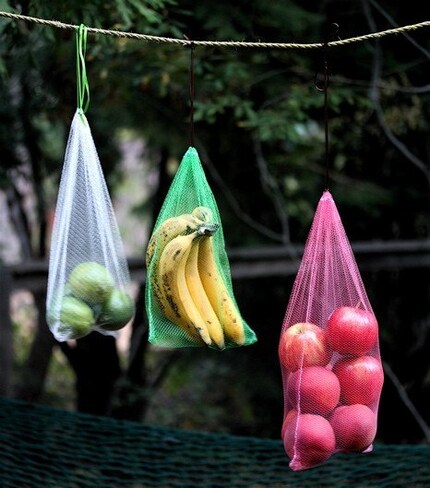
My re-usable produce bags were recently featured on Odannysgirl's blog. Check out her blogspot HERE for some great handmade items for you kitchen, and dont forget to purchase your set of re-usable produce bags for a chance to WIN a market bag!!
Posted by Lesley Marcacci at 8:18 AM 0 comments
Labels: eco-friendly, green, green living, health, kitchen, organic, produce bags
Wednesday, November 5, 2008
Hot Coffee!
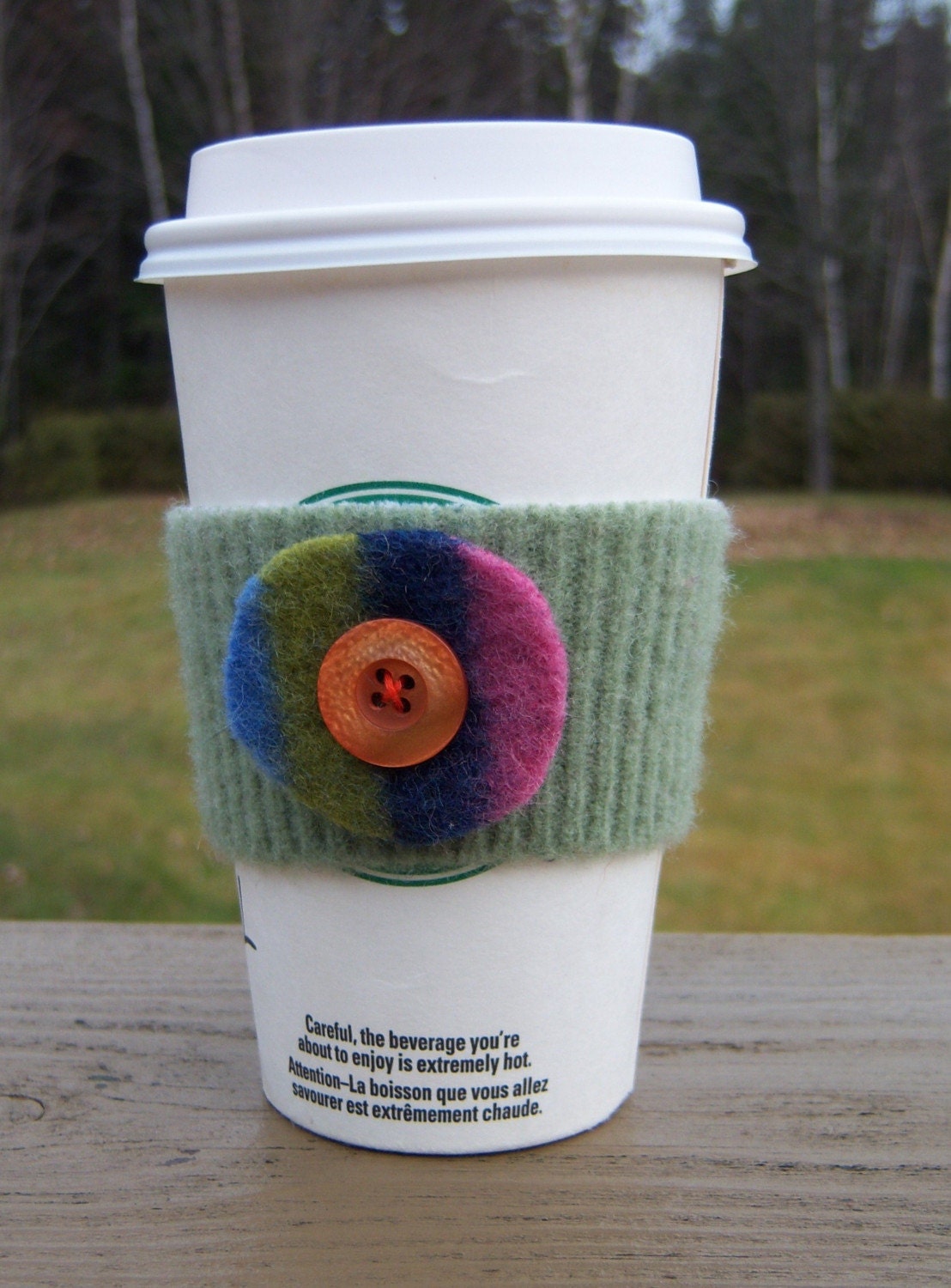
Did you know that the cardboard sleeves you usually get with your morning coffee can add up to 6-10 lbs. of paper waste a year? Eastcoastkitsch has found a way to upcycle seaters into new items, like coffee sleeves! Check out her items to find other fun upcycles items made out of sweaters and ties!
Posted by Lesley Marcacci at 4:06 PM 0 comments
Plant a card
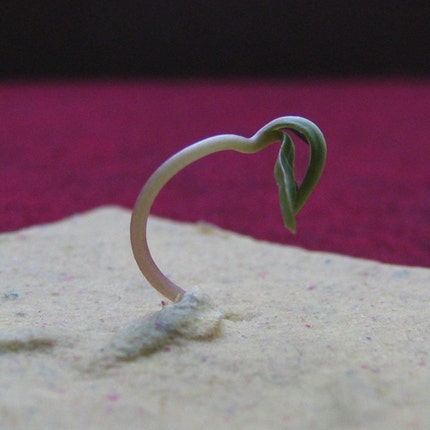
As a kid I always though burying paper in the ground could grow trees! It never worked, but now Recycledideas has found a way to make recycled cards that grow into beautiful flowers, trees, or vegetables! Just bury the card when you are done using it and enjoy it much longer... planting also keeps our air cleaner and grass greener, so buy your green HERE dont forget to mention you saw their item on gogirlgreen!
Posted by Lesley Marcacci at 3:40 PM 0 comments
Recycle Everything!
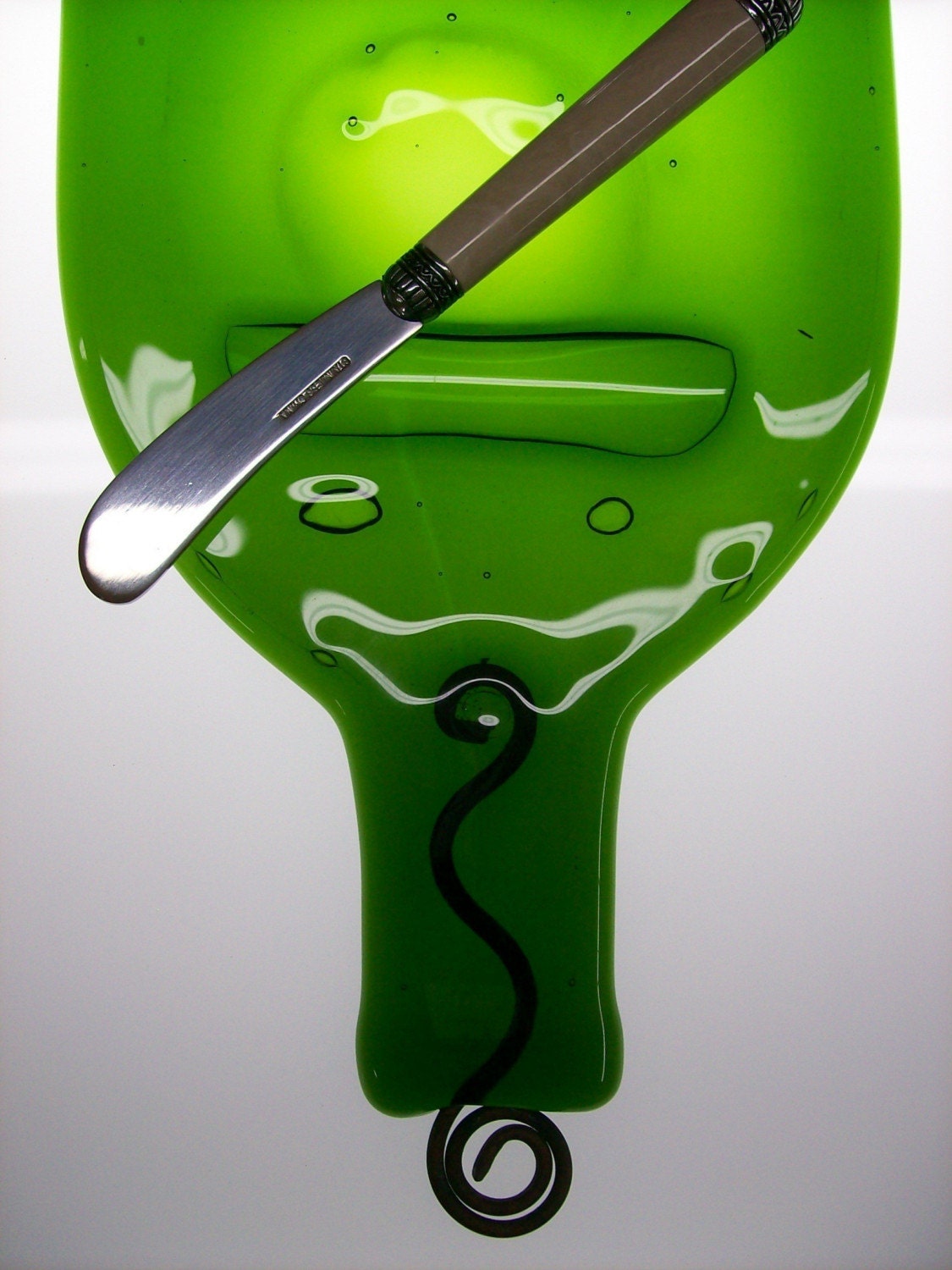
Have you ever though of a use for old wine bottles? CDChilds has! Now you can eat your cheese of this fabulous wine bottle cheese board. You can purchase it HERE! Dont forget to mention you saw their item on GoGirlGreen!
Posted by Lesley Marcacci at 3:14 PM 2 comments
---Win Win Win---

I am currently having a raffle for a market bag and set of re-usable produce bags. If you feature me in your blog or purchase on of my items between now and January 1st you will automatically be entered to WIN! Dont forget to check out my new items!
Posted by Lesley Marcacci at 3:10 PM 0 comments
Tuesday, September 16, 2008
Re-usable bags
![]()


The first item I would love to introduce you to is my new line of bags. These bags are made to be re-used again and again.
Did u know over 1 million bags are used each minute and that bags take hundreds of years to degrade? Even then they photodegrade turning into tiny particles that can harm our animals and our plantlife. I currently carry produce, snack, and bulk food bags.
They are chic and always the center of attention (did I mention they help us keep our sky bluer and our grass greener?) They also reduce cost. You no longer have to fork out $$ to buy little baggies that are just going to end up in the trash! The bags are washable and can be custom made to fit your needs.
You can purchase these at www.lmarcacci.etsy.com
Posted by Lesley Marcacci at 5:11 PM 0 comments
Go Green!
Its about time to start my first ever blog... Im not much of a writer but Im going to give it a shot! I recently became an "active" member of etsy.com (ive been a member for a year now) and found out just how important it is to protect our earth.
Ive been on the search for ways to help reduce waste and to live more "green". That is the real reason I am creating this blog. There are so many cool ways to help keep our planet clean, and I would love to introduce them to you!
Posted by Lesley Marcacci at 5:02 PM 0 comments


